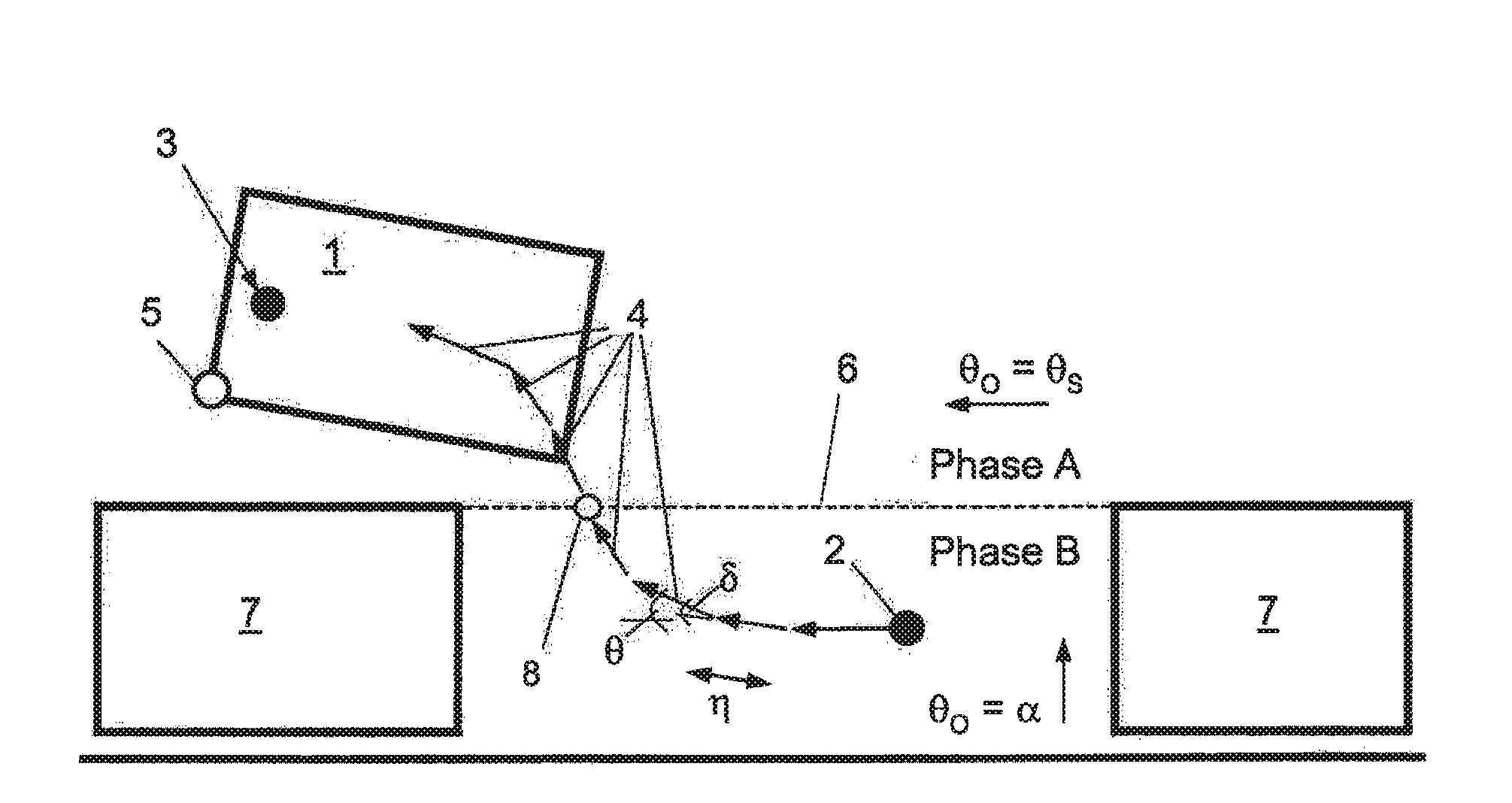Method for steering a vehicle
a vehicle and steering technology, applied in the direction of steering initiation, vessel construction, instruments, etc., can solve the problems of limited computing capacity available in vehicles, failure in practice, narrow bounds with respect to global optimization of the entire path, etc., to achieve low computing capacity, simple and fast, and reliably usable in practice
- Summary
- Abstract
- Description
- Claims
- Application Information
AI Technical Summary
Benefits of technology
Problems solved by technology
Method used
Image
Examples
Embodiment Construction
[0045]FIG. 1 shows a schematic outline of the kinematic model used for the vehicle. Vehicle 1 (not shown) has a length lc and a width wc, for example corresponding to the illustrated table, and is moving in the direction of vector v and initially has vehicle orientation θ with respect to the used coordinate system. The two wheels of one axis are combined here to each form an imaginary wheel 10 in the center of the axis, the front wheel having steering angle δ. The maximum steering angle in this exemplary embodiment is 45°. The distance between the two wheels is the corresponding wheelbase of vehicle L.
[0046]FIG. 2a shows a vehicle 1 which is in a starting position 2 and is to be steered into an end position 3 without coming in contact with obstacles 7. A number of sub-paths 4 are determined for this purpose, a static optimization problem being solved for each sub-path.
[0047]As a function of the position of a corner 5 of the vehicle relative to an imaginary boundary line 6 between ob...
PUM
 Login to View More
Login to View More Abstract
Description
Claims
Application Information
 Login to View More
Login to View More - R&D
- Intellectual Property
- Life Sciences
- Materials
- Tech Scout
- Unparalleled Data Quality
- Higher Quality Content
- 60% Fewer Hallucinations
Browse by: Latest US Patents, China's latest patents, Technical Efficacy Thesaurus, Application Domain, Technology Topic, Popular Technical Reports.
© 2025 PatSnap. All rights reserved.Legal|Privacy policy|Modern Slavery Act Transparency Statement|Sitemap|About US| Contact US: help@patsnap.com



